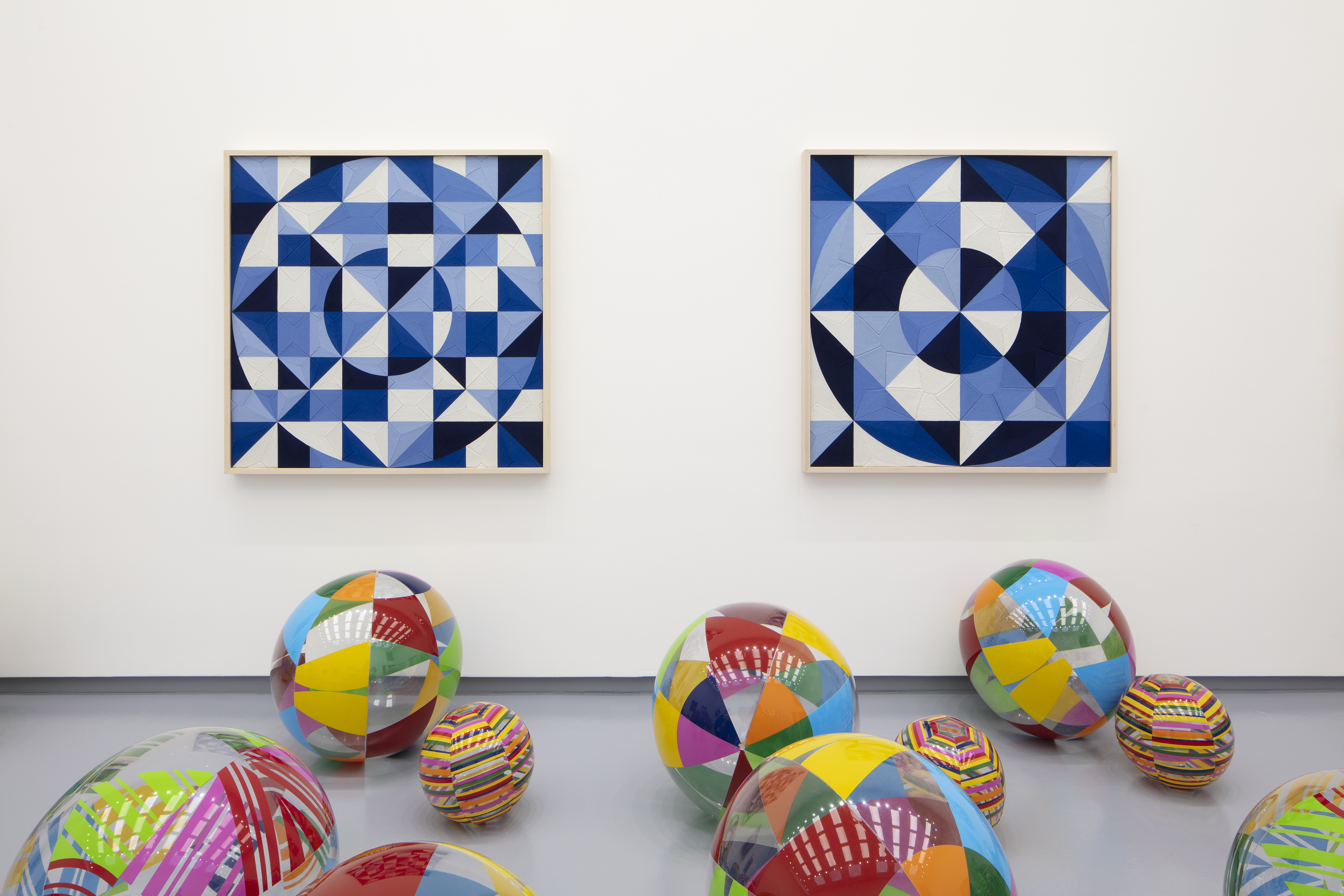
Eduardo Terrazas
To Weave the Possibility
Exhibition
-> Feb 6 2024 – Mar 2 2024
Proyectos Monclova inaugurates the exhibition To Weave the Possibility by the Mexican architect and artist Eduardo Terrazas, in which he brings together works from four work series titled “Possibilities of a structure”, “Tables” and “Cosmic variations”, all of recent production, “ The challenges of humanity”, in addition to the installation “Globos”.
The exhibition includes, in principle, the installation of a large-format soft sculpture, as well as a work belonging to the series “Possibilities of a structure”, begun in the sixties, in which the artist addresses a logic of repetition and difference that , according to art historian Daniel Garza Usabiaga, was a frequent practice of geometric abstraction in the work of various artists during that period. The works that make up this series recognize the contrast between the local and the global, the traditional and the modern that was part of the thinking of Terrazas, as well as other artists and thinkers of the time.
Within the pieces of the “Possibilities of a Structure” series, some of the “Cosmos” subseries are exhibited, works made with wool strands glued to a wooden support with Campeche wax. The works are based on the variation of a geometric structure beginning with two lines, one vertical and one horizontal, intersected in such a way that they place a point of gravity at the center. From there, two diagonal lines framed by a square also intersect, becoming a visual display of the cosmos. Finally, the circles complete the development of the cosmos, alluding to the universe and infinity.
From this same series, the exhibition has works belonging to the subseries "Diagonales" and "Reticula". In the first, Terrazas explores the intersecting of lines that are drawn diagonally in the designs and in the second you can find a structure that enters a tradition of geometric abstraction of the first half of the 20th century.
The exhibition also features some works from the “Tables” series, a group linked to international pictorial abstraction, in which Terrazas introduces the Wixárika technique of wool strand glued with Campeche wax to a wooden canvas. Eduardo Terrazas' work as an architect began in the 1960s, with his participation in the assembly and museography of exhibitions such as “Masterpieces of Mexican Art” (1960), and, later, with his participation in the construction and assembly of the Mexican Pavilion at the New York World's Fair between 1964 and 1965. Almost simultaneously, Terrazas entered the artistic field with the creation of "Globos", a piece that, as Garza Usabiaga mentions, was the first soft sculpture of scale monumental in the history of art in Mexico, and whose first version was mounted in the capital's Zócalo in 1967. A current version of this piece is the one shown in the exhibition To Weave the Possibility.
Eduardo Terrazas (Guadalajara, 1936) is an artist dedicated to architecture, design, museology, urban planning and art for more than fifty years. He is one of the founding members of the contemporary art scene in Mexico. Terrazas became a renowned architect at a young age when he was selected as co-designer of the logo and design elements that predominated in the 1968 Olympic Games in Mexico City. In the seventies, the artist began to experiment through drawing the formal relationships between geometric elements. These investigations, combined with the appropriation of elements of Mexican popular art, have resulted in a unique language, which navigates both contemporary art and artisanal tradition. Hence, it has adopted the Huichol technique – in which strands of colored wool are arranged on wooden boards covered in wax – not only for its aesthetic properties, but also for the difficulty that the method itself demands, since it involves a firm concentration. in the act, which results, consequently, in a meditative process.
— Proyectos Monclova